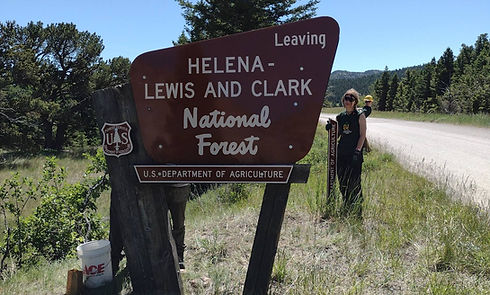Helena-Lewis and Clark National Forest

Planting in this forest.
In 2024, the Helena-Lewis and Clark National Forest advanced its commitment to ecological restoration with the Duck Creek Pass Whitebark Pine Planting project. This initiative focused on reintroducing whitebark pine, a keystone species vital for maintaining high-elevation ecosystem health and stability. Over the course of the year, 25,000 whitebark pine seedlings were planted in areas affected by past wildfires and environmental stressors, aiming to restore this critical species and enhance biodiversity.
The restoration history of the Helena-Lewis and Clark National Forest reflects a series of dedicated efforts to rehabilitate and sustain its diverse ecosystems. In 2019, the Lost Fork Ridge Whitebark Pine Restoration project was implemented in areas impacted by the Fork Ridge Fire (1,300 acres), the 2001 Lost Fork Fire (2,338 acres), and the 2003 Ant Park Fire. This project aimed to restore whitebark pine populations by reducing competition from other species and planting rust-resistant seedlings.
These restoration projects are integral to the forest's broader strategy to combat the effects of climate change, invasive species, and human activities. By reintroducing native species and improving forest resilience, the Helena-Lewis and Clark National Forest aims to preserve its ecological integrity and ensure the sustainability of its natural resources for future generations.




Location
Idaho & Montana, USA
Project Type
Reforestation
Environmental Benefits
Ecosystem Restoration.
Historical Preservation.
Recreational Enhancement.
Soil and Water Conservation.
Climate Change Mitigation.
About this forest
The Helena-Lewis and Clark National Forest spans over 2.8 million acres in central Montana, featuring diverse landscapes ranging from rugged mountain peaks and deep valleys to grasslands and alpine meadows. Renowned for its pristine wilderness, the forest is home to wildlife such as elk, grizzly bears, and bald eagles. It offers abundant recreation opportunities, including hiking, fishing, and camping, amidst stunning natural beauty.




